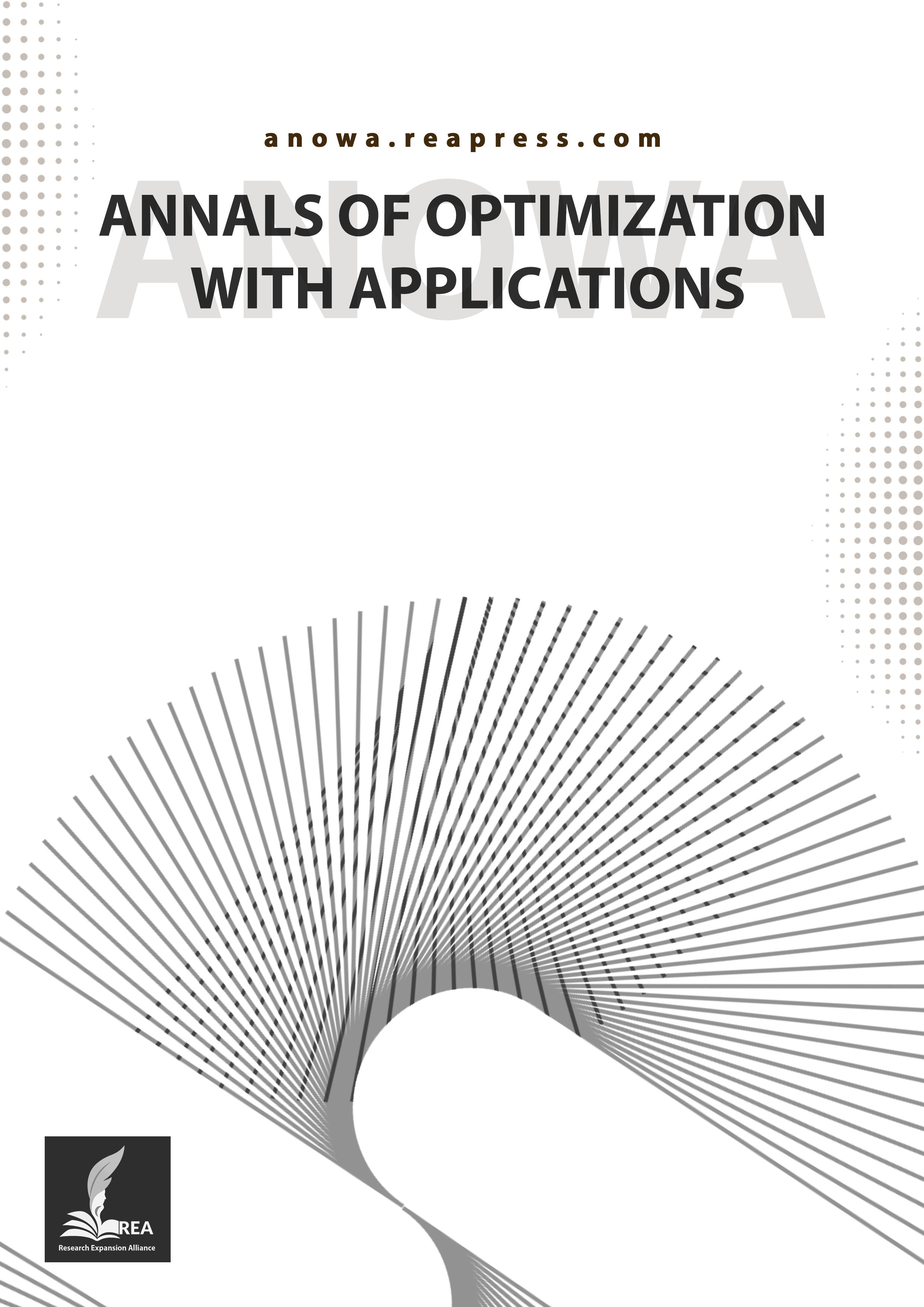Standardized Combined Efficiency in a Two-Stage Data Envelopment Analysis Network
Abstract
Optimizing systems based on decision-making criteria across multiple sets requires selecting different stages to achieve the best efficiency for the analyst's objective. Therefore, advantages and disadvantages must be considered simultaneously to choose the most effective method. The Hurwicz criterion is an approach that combines pessimistic and optimistic criteria to achieve optimal efficiency. This method allows for solving more complex problems in two or multiple stages. In the standardized combined approach within a two-stage Data Envelopment Analysis (DEA) network, the outputs of the first stage are selected as the inputs of the intermediate stage, ultimately determining the Most Productive Scale Size (MPSS). By applying the Hurwicz method in both optimistic and pessimistic scenarios, the best Decision-Making Units(DMUs) are selected for analysis.
Keywords:
Data envelopment analysis, Optimistic, Pessimistic, Hurwicz criterion, Two-stage networkReferences
- [1] Charnes, A., Cooper, W. W., & Rhodes, E. (1978). Measuring the efficiency of decision making units. European journal of operational research, 2(6), 429–444. https://doi.org/10.1016/0377-2217(78)90138-8
- [2] Banker, R. D., Charnes, A., & Cooper, W. W. (1984). Models for estimating technical and scale inefficiencies. https://B2n.ir/w90834
- [3] Banker, R. D., Cooper, W. W., Seiford, L. M., Thrall, R. M., & Zhu, J. (2004). Returns to scale in different DEA models. European journal of operational research, 154(2), 345–362. https://doi.org/10.1016/S0377-2217(03)00174-7
- [4] Wang, Y. M., Chin, K. S., & Yang, J. B. (2007). Measuring the performances of decision-making units using geometric average efficiency. Journal of the operational research society, 58(7), 929–937. https://doi.org/10.1057/palgrave.jors.2602205
- [5] Wang, Y. M., & Lan, Y. X. (2013). Estimating most productive scale size with double frontiers data envelopment analysis. Economic modelling, 33, 182–186. https://doi.org/10.1016/j.econmod.2013.04.021
- [6] Chen, L., & Wang, Y. M. (2025). Efficiency decomposition and frontier projection of two-stage network DEA under variable returns to scale. European journal of operational research, 322(1), 157–170. https://doi.org/10.1016/j.ejor.2024.10.011
- [7] Turay, S. S., Adams, C. A., & Donkor, A. A. (2025). Assessment of paratransit system performance in mixed traffic using a two-stage bootstrap-DEA and ordinary least square approach. African transport studies, 3, 100021. https://doi.org/10.1016/j.aftran.2024.100021
- [8] Zhang, X., Wei, F., Xia, Q., Song, S., & Wang, D. (2024). Efficiency assessment of two-stage systems with fixed-sum outputs: A noncooperative DEA model with uncertain stage priority. Expert systems with applications, 253, 124274. https://doi.org/10.1016/j.eswa.2024.124274
- [9] Dar, K. H., & Raina, S. H. (2024). Public healthcare efficiency in India: Estimates and determinants using two stage DEA approach. Evaluation and program planning, 106, 102472. https://doi.org/10.1016/j.evalprogplan.2024.102472
- [10] Hurwicz, L. (1951). Optimality criteria for decision making under ignorance. https://cowles.yale.edu/node/148455
- [11] Hurwicz, L. (1952). The generalized bayes-minimax principle: A criterion for decision-making under uncertainty. Cowles Foundation for Research in Economics. https://B2n.ir/kq1771
- [12] Chen, Y., Liang, L., & Zhu, J. (2009). Equivalence in two-stage DEA approaches. European journal of operational research, 193(2), 600–604. https://doi.org/10.1016/j.ejor.2007.11.040
- [13] Li, Y., Chen, Y., Liang, L., & Xie, J. (2014). DEA models for extended two-stage network structures. Data envelopment analysis: A handbook on the modeling of internal structures and networks, 261–284. https://doi.org/10.1007/978-1-4899-8068-7_12


